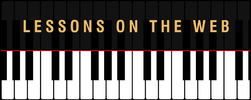|
Without a doubt, rhythm can be one of the most challenging parts of learning how to read and play music on our pianos. There’s so much involved! Science has shown us already that piano players and other musicians use both sides of our brains at the same time when we play music. That means that there’s a lot going on in there that we just aren’t aware of and really, don’t need to be. It’s neat to know what’s happening though! So part of the reason that rhythm is so challenging is that we’re learning it in our brains/minds as well as our bodies…at the same time. We have to “read it” while we “play it”; kind of like patting your head and rubbing your tummy at the same time. There’s a neat way to crack through some of these speed bumps though that will help reading and playing rhythms much easier and feel a lot more natural. The trick is to find a word that has the same number of syllables as the rhythmic value that you are playing and say the words instead of saying the counts of each beat. For example, if you have 4 quarter notes in a measure, instead of saying “1, 2, 3, 4”, I use “hot dog hot dog”. See how simple that is? Now you’re going to associate hot and dog with quarter notes. (Of course, you are going to use your own favorite word or food if you don’t like my example.J ) These words work because they have only one syllable each and quarter notes have only 1 beat each. If we take another rhythmic value such as eighth notes, we find that we need a word that has 2 syllables instead of 1. The example I use is so-da. So is for the 1st eighth note and Da is for the 2nd eighth note. Again, this word works because it has 2 syllables in it and we have 2 eighth notes in each beat. A 1 syllable word would not work in this case. Once you have applied your chosen words to the rhythmic values in your music, play through it saying the words instead of the actual counts and see how much easier it is. As we advance into more difficult music we will end up having a mixture of different rhythmic values in one measure. In this case, we simply do the same thing…match words that have the same number of syllables to each rhythmic value and play the measure/notes saying the words. For example, if you have 2 eighth notes along with 1 quarter note, you might want to say “so-da pop”. So-Da is for both the eighth notes and Pop is for the quarter note. If you have 4 sixteenth notes in a row, you might want to say “pep – er – on - i”. See how you associate the 4 syllables to match the 4 sixteenth notes? There are endless combinations of rhythms that you can have as well as words that you can apply to them to help you feel the counting. What’s important here is that by feeling the rhythm before you understand it intellectually, actually helps you understand it intellectually later on! It’s easier to feel a rhythm when we associate it with a word or phrase that we connect to and it’s fun to come up with words that we end up laughing at while we’re playing them. Before you know it, you also somehow come to understand how to count it and apply the beats correctly. This video gives you many examples of applying words to different rhythmic values and combinations of values in one measure. It will help you to play along with me at your own piano and then you’ll be all set to do this on your own anytime you’re having trouble counting a measure. If you like my tips and lessons, you will love the courses over on my website. Whether you are a beginner looking to get a solid foundation to build on or you are looking to take you existing skills to that next level, the online music courses on my website https://www.pianolessonsontheweb.com will help you do just that.
Luanne Stevens
4/2/2021 08:17:12 pm
I loved your video. Where I have the most problem is for odd time signatures like 6/4, 2/2, and others I can’t remember at the moment. How would this method be used for time signatures other than 4/4?
Reply
Leave a Reply. |
AuthorMost blogs written by Archives
June 2020
Categories
All
|

 RSS Feed
RSS Feed